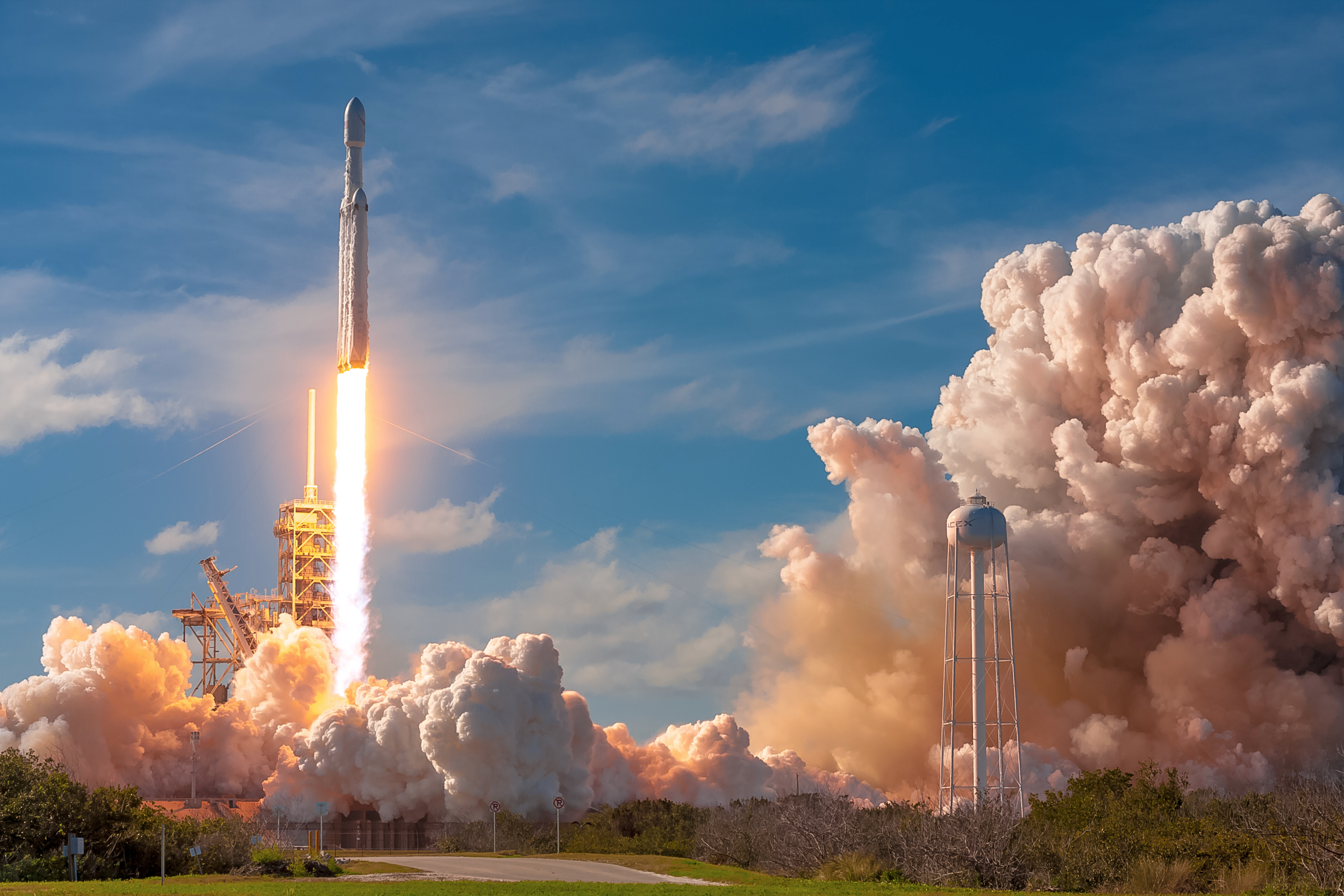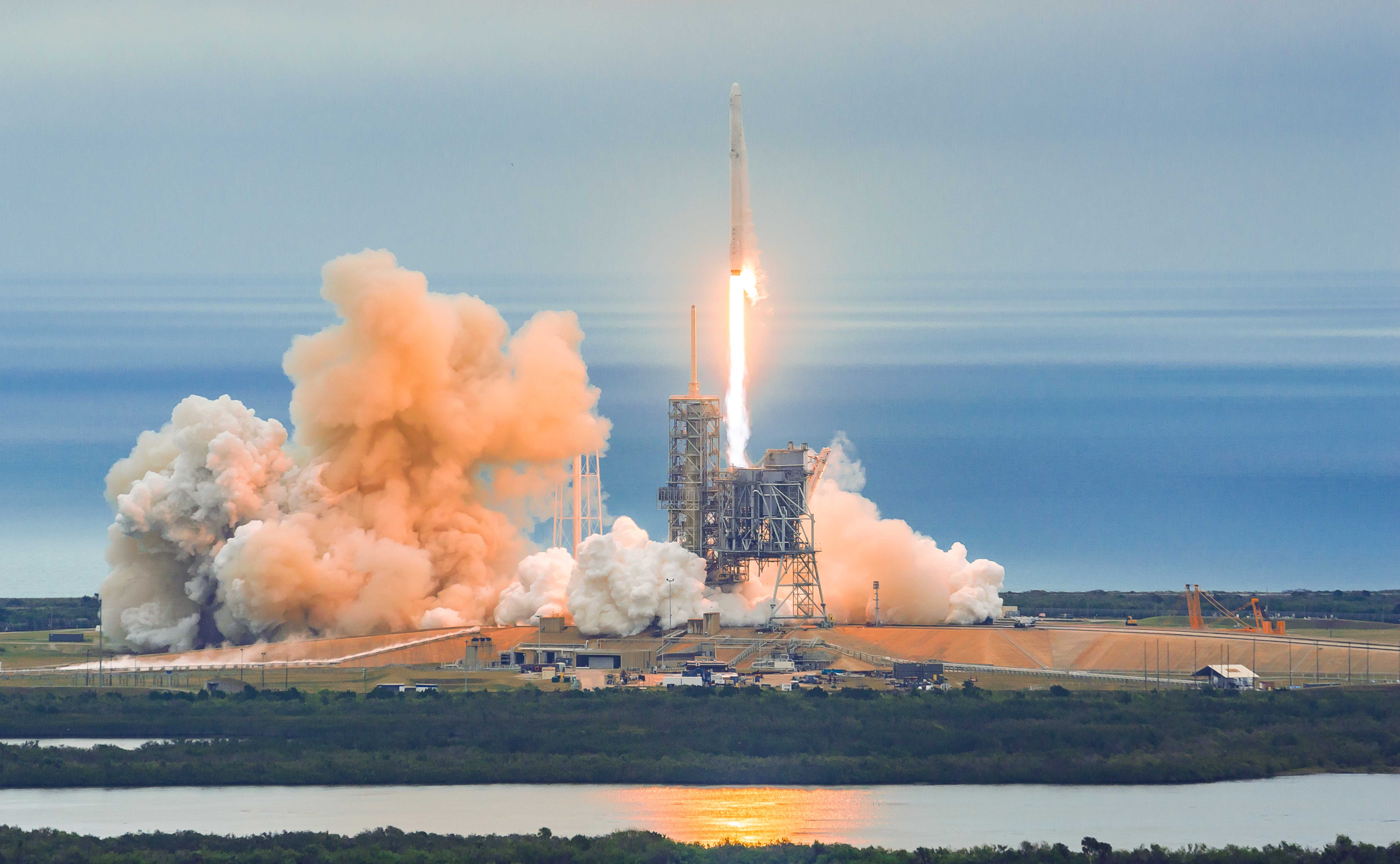SpaceX Launch History and Timeline

Spacex launch – SpaceX, founded by Elon Musk in 2002, has played a pivotal role in revolutionizing the space industry. The company’s primary focus is on developing reusable launch vehicles and spacecraft, with the ultimate goal of enabling affordable and sustainable access to space.
SpaceX’s recent launch marked another milestone in human exploration of the cosmos. As the rocket ascended through the atmosphere, it left behind a trail of awe and anticipation. However, the quest for space exploration has its roots in the harnessing of water resources, as exemplified by the historic Rapidan Dam.
This dam, built in the 1930s, provided electricity to power early rocket launches, paving the way for the advancements we witness today in SpaceX’s missions.
SpaceX’s launch history is marked by a series of milestones and achievements that have pushed the boundaries of space exploration. The company’s first successful orbital launch occurred in 2008 with the Falcon 1 rocket, followed by the larger Falcon 9 rocket in 2010. Since then, SpaceX has conducted numerous successful launches, including missions to the International Space Station (ISS), commercial satellite deployments, and even private space tourism flights.
SpaceX’s latest launch into space marked another milestone in the exploration of the cosmos. While Quincy Wilson was busy setting records on the basketball court, SpaceX was quietly making history in the realm of space travel. As the rocket soared through the atmosphere, it carried with it the hopes and dreams of countless individuals, inspiring us to look up at the stars and imagine the infinite possibilities that lie beyond our planet.
Key SpaceX Launches
The following table provides an overview of some key SpaceX launches, highlighting the mission objectives, payload details, and launch outcomes:
| Date | Mission Name | Launch Vehicle | Mission Objective | Payload | Launch Outcome |
|---|---|---|---|---|---|
| March 24, 2006 | Falcon 1 Flight 1 | Falcon 1 | Test flight | None | Failure |
| September 28, 2008 | Falcon 1 Flight 4 | Falcon 1 | Test flight and payload deployment | RazakSAT | Success |
| June 4, 2010 | Falcon 9 Flight 1 | Falcon 9 | Test flight | None | Success |
| December 8, 2010 | COTS Demo Flight 1 | Falcon 9 | Commercial Orbital Transportation Services (COTS) demonstration flight to the ISS | Dragon spacecraft | Success |
| May 22, 2012 | COTS Demo Flight 2 | Falcon 9 | Second COTS demonstration flight to the ISS | Dragon spacecraft | Success |
| October 7, 2012 | SpaceX CRS-1 | Falcon 9 | First operational Cargo Resupply Services (CRS) mission to the ISS | Dragon spacecraft | Success |
| December 3, 2013 | SES-8 | Falcon 9 | Commercial communications satellite deployment | SES-8 satellite | Success |
| September 29, 2016 | AMOS-6 | Falcon 9 | Commercial communications satellite deployment | AMOS-6 satellite | Failure |
| February 19, 2017 | SpaceX CRS-10 | Falcon 9 | Tenth operational CRS mission to the ISS | Dragon spacecraft | Success |
| December 23, 2017 | Falcon Heavy Test Flight | Falcon Heavy | Test flight of the Falcon Heavy rocket | Tesla Roadster | Success |
| February 6, 2018 | SpaceX CRS-14 | Falcon 9 | Fourteenth operational CRS mission to the ISS | Dragon spacecraft | Success |
| April 11, 2019 | SpaceX Crew Demo-1 | Falcon 9 | Demonstration flight of the Crew Dragon spacecraft to the ISS | Crew Dragon spacecraft | Success |
| May 30, 2020 | SpaceX Crew Dragon Demo-2 | Falcon 9 | First crewed flight of the Crew Dragon spacecraft to the ISS | Crew Dragon spacecraft with astronauts Bob Behnken and Doug Hurley | Success |
SpaceX Launch Vehicle Analysis

SpaceX has developed and operated a range of launch vehicles to meet the demands of its diverse launch missions. Each launch vehicle possesses unique capabilities and specifications, catering to specific payload requirements and target applications.
Falcon 9
- Two-Stage Reusable Rocket: Falcon 9 is a partially reusable launch vehicle featuring two stages. The first stage, powered by nine Merlin engines, is designed to return to Earth after liftoff and can be reused for multiple launches.
- Payload Capacity: Falcon 9 has a payload capacity of up to 22,800 kilograms to low Earth orbit (LEO) and 8,300 kilograms to geostationary transfer orbit (GTO).
- Applications: Falcon 9 is primarily used for launching satellites, cargo missions to the International Space Station, and Starlink satellites for SpaceX’s broadband internet constellation.
Falcon Heavy
- Heavy-Lift Launch Vehicle: Falcon Heavy is a heavy-lift launch vehicle composed of three Falcon 9 first stages strapped together. It is the most powerful operational rocket in the world.
- Payload Capacity: Falcon Heavy boasts a payload capacity of up to 63,800 kilograms to LEO and 26,700 kilograms to GTO, making it suitable for launching large satellites, space telescopes, and interplanetary missions.
- Applications: Falcon Heavy is used for launching payloads that exceed the capacity of Falcon 9, such as the James Webb Space Telescope and the Psyche spacecraft.
Starship
- Fully Reusable Spacecraft: Starship is a fully reusable spacecraft and launch vehicle system designed for interplanetary travel and lunar missions. It consists of a reusable spacecraft and a reusable booster called Super Heavy.
- Payload Capacity: Starship has a payload capacity of up to 100,000 kilograms to LEO and is capable of transporting crew and cargo to the Moon, Mars, and beyond.
- Applications: Starship is intended for a wide range of missions, including crewed lunar landings, Mars colonization, and satellite deployment.
SpaceX continues to develop and advance its launch vehicle technology. The company is working on upgrades to Falcon 9 and Falcon Heavy to improve their performance and reliability. Additionally, SpaceX is actively developing Starship, which represents a significant leap forward in space transportation capabilities.
SpaceX Launch Operations and Infrastructure
SpaceX has developed a comprehensive launch process to ensure the successful deployment of its spacecraft. The process involves meticulous planning, rigorous safety protocols, and state-of-the-art infrastructure.
SpaceX’s launch operations begin with mission planning, where engineers meticulously design the trajectory, determine the launch window, and select the appropriate launch vehicle. The spacecraft undergoes rigorous testing and integration to ensure it is ready for launch.
Launch Facilities
SpaceX operates two primary launch facilities: Launch Complex 39A at the Kennedy Space Center in Florida and Starbase in Boca Chica, Texas. These facilities feature launch pads equipped with advanced systems for vehicle assembly, fueling, and liftoff.
Tracking Stations
SpaceX utilizes a network of tracking stations located around the globe to monitor the trajectory of its spacecraft during launch and throughout its mission. These stations provide real-time data on the vehicle’s performance, enabling engineers to make necessary adjustments.
Recovery Vessels
SpaceX has developed specialized recovery vessels, known as “drone ships,” to retrieve the first stage of its Falcon 9 rockets after launch. These vessels are equipped with advanced navigation and guidance systems to precisely locate and recover the booster for reuse.
Optimization and Cost Reduction
SpaceX is constantly striving to optimize its launch operations and reduce costs. The company has implemented innovative techniques such as rapid reusability of its Falcon 9 rockets and the development of the Starship launch system, which is designed to be fully reusable and significantly reduce launch expenses.
The SpaceX launch, a testament to human ingenuity, sent ripples of excitement across the globe. As the rocket soared through the vast expanse, it ignited a spark of inspiration in the hearts of many, including the legendary drag racer John Force.
Force, known for his unparalleled skill and unwavering determination, saw in the SpaceX launch a reflection of his own relentless pursuit of speed and excellence. The launch became a symbol of the indomitable spirit that drives us to push boundaries and reach for the stars.
The recent SpaceX launch was a resounding success, marking a significant milestone in the annals of space exploration. As the rocket soared towards the heavens, one couldn’t help but think of the iconic Snoop Dogg , whose laid-back persona and lyrical prowess have captivated generations.
Just as Snoop Dogg has left an enduring mark on the music industry, so too will SpaceX’s achievements inspire future generations to reach for the stars.
The successful SpaceX launch sent ripples through the tech world, overshadowed by a recent CDK cyberattack. Despite the setback, the launch marked a significant milestone in space exploration, reminding us of the indomitable spirit of innovation amidst digital threats.